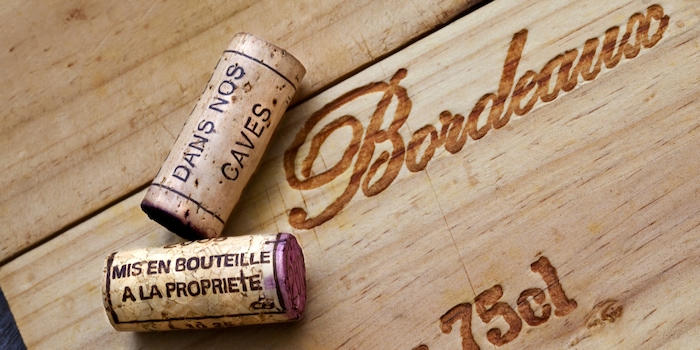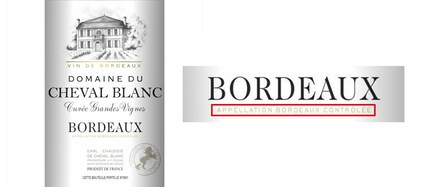

Knowing your wine: appellations as a quality feature
A wine’s origin is often clearly stated on its label. Especially European winemakers add this geographical indication to their wines. Have you ever wondered what this so-called appellation means and what it tells you about the wine? I’ve put together a guide on wine appellation to give you answers to these and more questions about wine.
Knowing where a wine is from is a great starting point when it comes to discovering the world of wine. Many of us will know the most famous European wine regions such as Rioja or Bordeaux.
When it comes to wine, where the grapes were grown has a much larger impact on the taste of the end product than with other agricultural products. The type of grape, degree of latitude, soil structure and factors such as landscape or weather all influence a wine. Apart from appellations, there are Table Wines and wines with PGI label, as for example «Vins du pays», which aren’t of the same quality as wines with an appellation. If you know about appellations, it will help you pick your wine or find a wine again once you’ve decided on one you like.
The purpose and benefit of appellations
An appellation is a legally defined geographical indication of the origin of a wine and one of its most important quality features. Noble grape varieties in particular only realise their full potential in very specific conditions. This is why many European wines carry the name of their region instead of the name of the grape they’re made of. If you buy a Bordeaux wine with a corresponding appellation, this wine is sure to be produced with the same minimum quality standards as a Bordeaux wine with the same appellation that’s from another winemaker. However, there can still be differences, as the rules that govern appellations aren’t equally strict in every region. The appellation also acts as a protection for winemakers, as it makes sure that original wines can be distinguished from wines that aren’t typical for a region.
France as pioneers
France has a pioneering role when it comes to wine appellation. The French appellation is the oldest and considered the most reliable. The «Appellation d'Origine Contrôlée» (AOC) defines the growing region of the grapes, quality parameters such as maximum yields, grape variety and minimum level of alcohol as well as other aspects such as the storage time.

Knowing about appellations will help you find the wine you like.
A region alone doesn’t guarantee a quality standard. However, if a region comes with an appellation, there’s a clear definition of the geographical boundaries that are included. Only wines that feature an appellation label are subject to the corresponding regulations and controls. Therefore, it’s forbidden to sell wine under an appellation name if the defined regulations aren’t met.
Appellations in other European countries
The AOC system has set an example for many other countries who came up with their own quality schemes. To avoid confusion, the European Union scheme «Protected Designation of Origin» (PDO) came into force in 1992 and was aligned with all country-specific appellations. Today, «AOC» or other schemes are often used alongside or instead of the «PDO» label for reasons of popularity. Some famous appellations that are old but still valid are:
Italy: DOC «Denominazione di Origine Controllata», also DOCG «Denominazione di Origine Controllata e Garantita».
Spain: DO «Denominación de Origen»
Portugal: DOC «Denominação de Origem Controlada»
Austria: DAC «Districtus Austriae Controllatus»
Wine labels with appellation marking
When labelling wines, the according appellation is often mentioned. In this case: «Appellation Bordeaux Contrôlée». Wines with appellations that include additions such as «Appellation Bordeaux Supérieur Contrôlée» must meet even stricter requirements and stand for a higher quality of wine. I’ll go into more detail on this later on (in the section titles «Appellation levels»).

Appellation levels
If there is an even more characteristic wine of higher quality than the rest within one appellation region, it makes good economic sense to label it as such. For this reason, large wine regions set up special areas within one appellation that define such special wines and make it possible to separate the two appellations. These small appellations are subject to even stricter guidelines and are therefore often of higher quality.
Large appellations produce more wine, which is why these wines tend to be less expensive than others. Wines from small appellations with a lower production volume are often more expensive.
Regional appellation:
Price per bottle: 💰
Production volume: 🍷🍷🍷🍷
Area appellation:
Price per bottle 💰💰
Production volume: 🍷🍷🍷
Town appellation:
Price per bottle 💰💰💰
Production volume: 🍷🍷
Vineyard appellation:
Price per bottle 💰💰💰💰
Production volume: 🍷
Don’t despair, the world of appellations is very complicated. There are some rules and many exceptions. And there are exception within exceptions, too. If you’re interested in one specific appellation, all you need to do is look it up on the internet and find out what exactly it stands for.
Discover our wine range
Friends, family, cats and good wine are my lifeblood.
Interesting facts about products, behind-the-scenes looks at manufacturers and deep-dives on interesting people.
Show all
